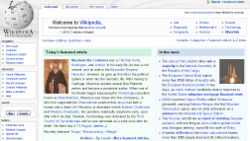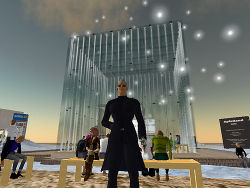What is Digital Creativity
You are the star of the digital revolution.
According to Time Magazine, who named "You" the 2006 Person of the Year, this honor has been bestowed for "seizing the reins of the global media, for founding and framing the new digital democracy, and for working for nothing and beating the pros at their own game."[1] We have transformed the World Wide Web into an inherently social and collaborative world, heralding the Web 2.0 evolution and empowering the individual end-user to take on a role of participatory creativity. This transition from "passive" users to users who actively produce online content has demonstrated the rise in power of both individuals and communities.
Digital Natives include both sides of the spectrum. At one end lie the super-users--those who create mashups and animations, maintain daily blogs, and tag every article they read. The other end of the spectrum represents those Digital Natives who maintain an online presence in order to keep track of relationships and social life, or more simply, just to pass the time. Not all Digital Natives are active creators. Not every teen is parked in front of their computer creating mashups or updating their vlogs. All Digital Natives, however, have the option and indeed the means to be active creators. There has been a leveling of the digital playing field that has enabled Digital Natives to take on a more active role in political and creative processes.
The precursor to this movement and arguably a major catalyst in tearing down the Internet's previously high barriers to entry was the open source movement. The vast collaborative and voluntary movement (totaling over one hundred thousand person-years of effort) brought highly sophisticated and complex software products mainstream, including the Linux operating system, the Apache server software, and Mozilla Firefox. This unprecedented effort demonstrated that a broad range of innovations could be achieved in the new digital landscape.
Digital Natives are increasingly engaged in creating information, knowledge, and entertainment. Three common themes emerge regarding digital creativity: mixing and mashing, norms of sharing, and practices of social networking and community building. One of the biggest contributions to the digital world is what is known as the mash-up, illustrating that Digital Natives are interacting not only with their peers, but with content as well. Media files are easily manipulated, adding an entirely new dimension to the digital creativity. Collaborative fan fiction, sampling, and mash-ups exemplify the new "rip, mix, and burn" culture, to use the slogan that Apple has so appropriately coined.

Wikipedia is one of the clearest examples of the shifting trend in online culture from a world of consumers to world of creators. Wikipedia is written collaboratively by an army of volunteers using a simple, yet exceedingly powerful technology called a "wiki," or in other words, a website that functions somewhat like a Microsoft Word document that anyone can edit at any time. Six years after its inception in 2001, Wikipedia boasts over six million articles in 249 languages. All things considered, Wikipedia points to the double-edged sword of the Digital Natives' do-it-yourself online culture. The extraordinary collaboration and participation in a project of such great magnitude is contrasted with the concerns over credibility and plagiarism.
Second Life has taken the online world by storm. A virtual world focusing on social interaction rather than objective-based game-play, Second Life is an example of an MMOG, or Massively Multiplayer Online Game, that is in fact remarkably conducive to self-expression and creativity. Second Life's over three million subscribers use real money to outfit their own avatars, buy land, and start virtual businesses. Last year, Anshe Chung, a virtual land baroness, became the first real millionaire â in terms of real United States dollars â in Second Life. The volume of money that changed hands among players in Second Life reached $130 million. Content is also blurring the lines between the real world and the virtual world as digital creators connect people and content in a digital space.

Critical questions emerge from this phenomenon. Does internet usage replace face-to-face interactions? Do we spend less time with real human beings the more hours we surf the net? What are the effects of internet communication on existing relationships with family and friends? Does it help us to build new relationships and communities? For the Digital Native, the Internet arguably fosters interaction, both online and through more traditional channels. Social software is changing the way we connect and interact with our peers. The prevalence of social networks has led to the proliferation of user-generate content in cyberspace, as more than half of all teens have created content on the Internet, according to studies done by Pew Internet. The unprecedented rise in digital creativity has changed the cyber-landscape as we once knew it. We must examine the implications that have arisen concerning the changing world of the Digital Native.